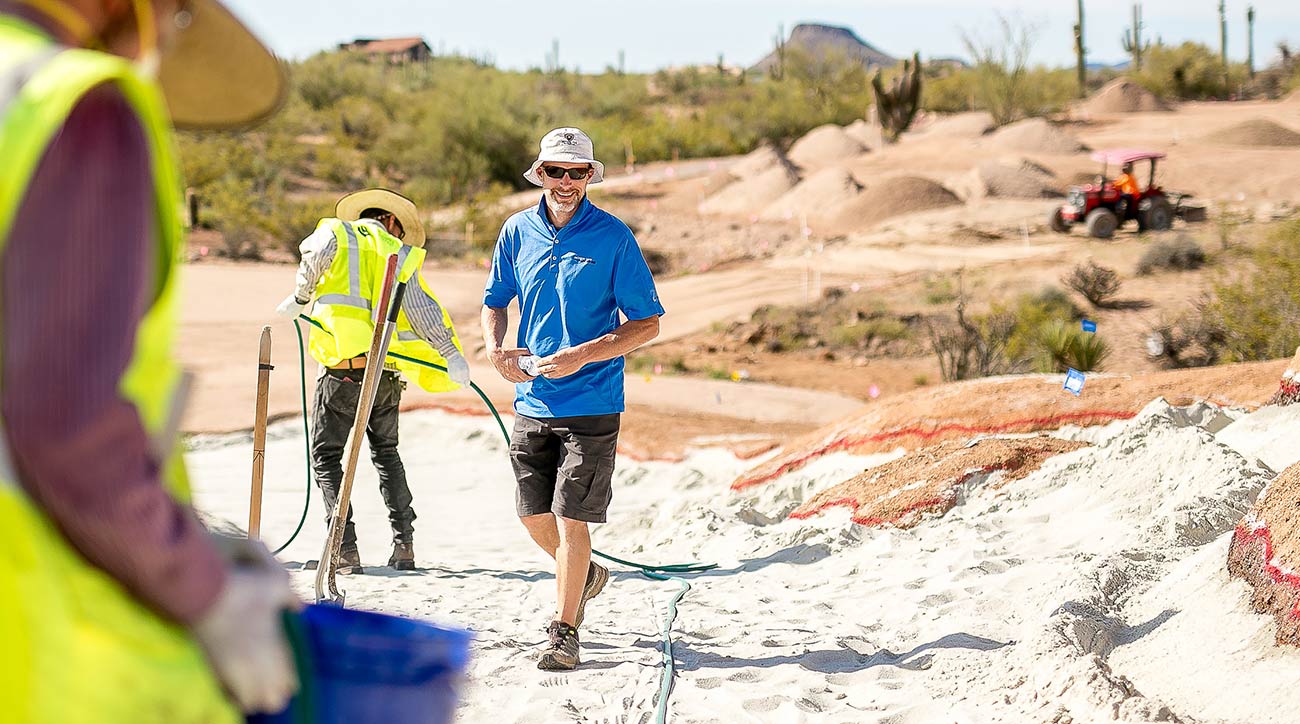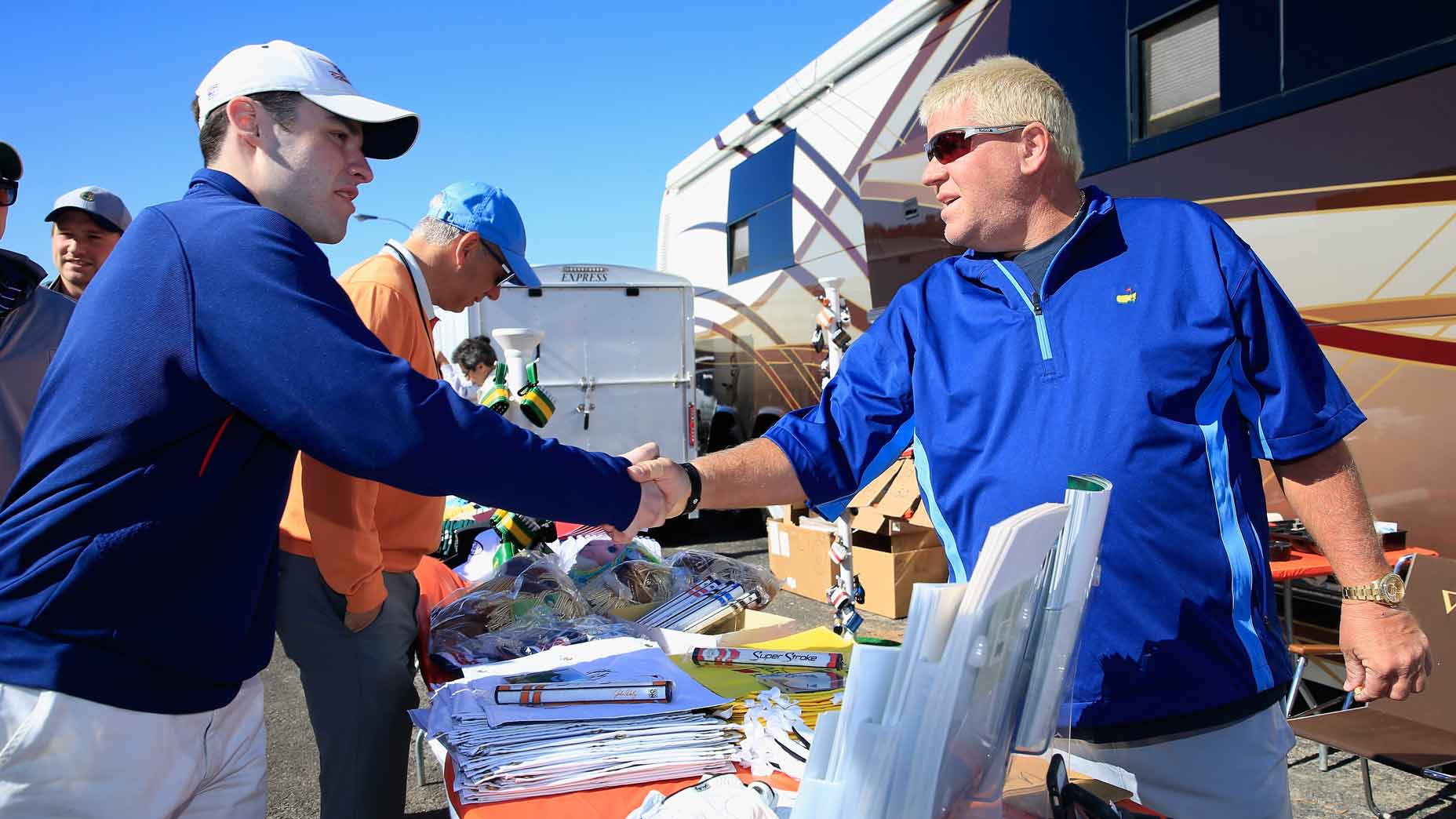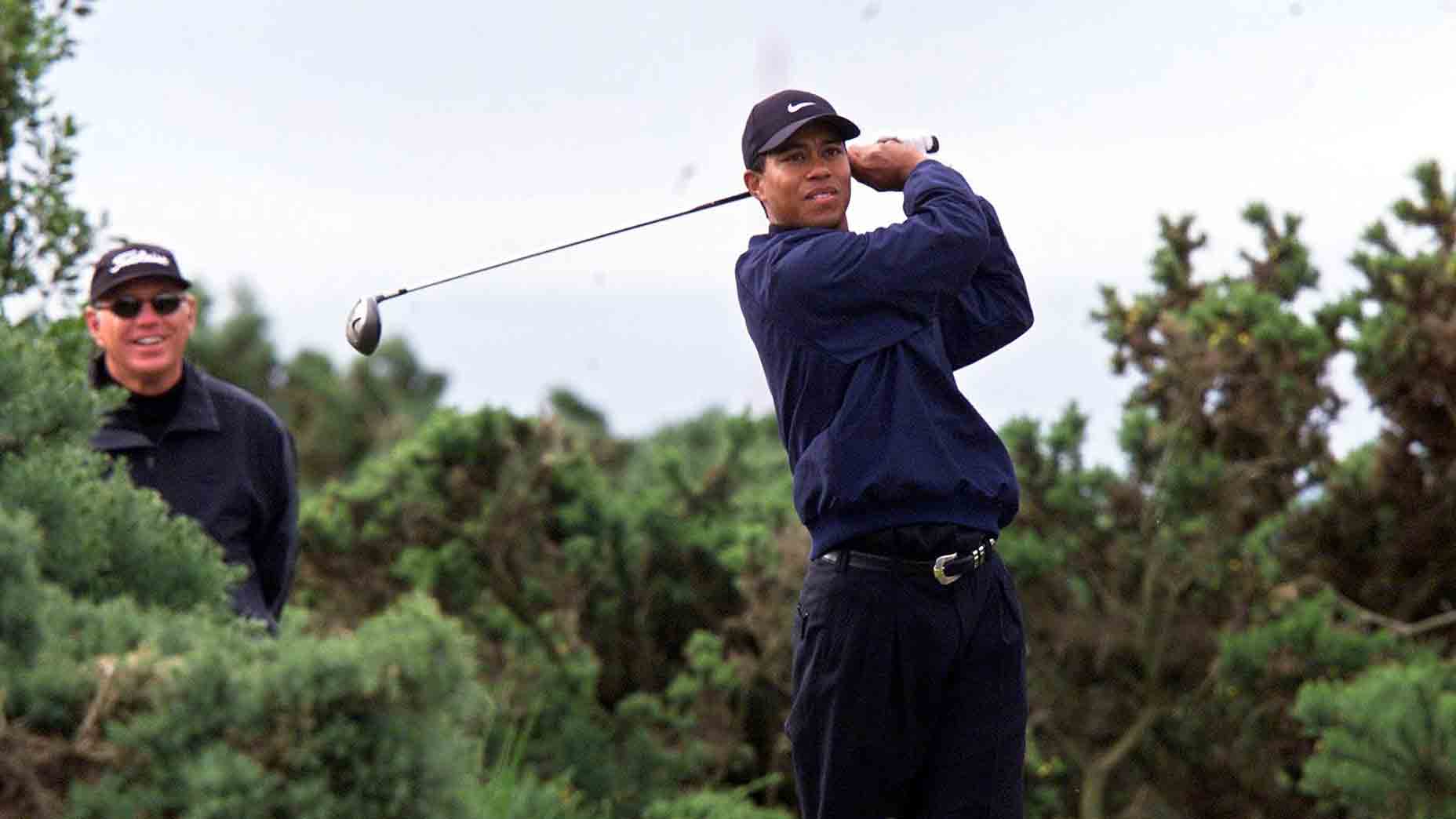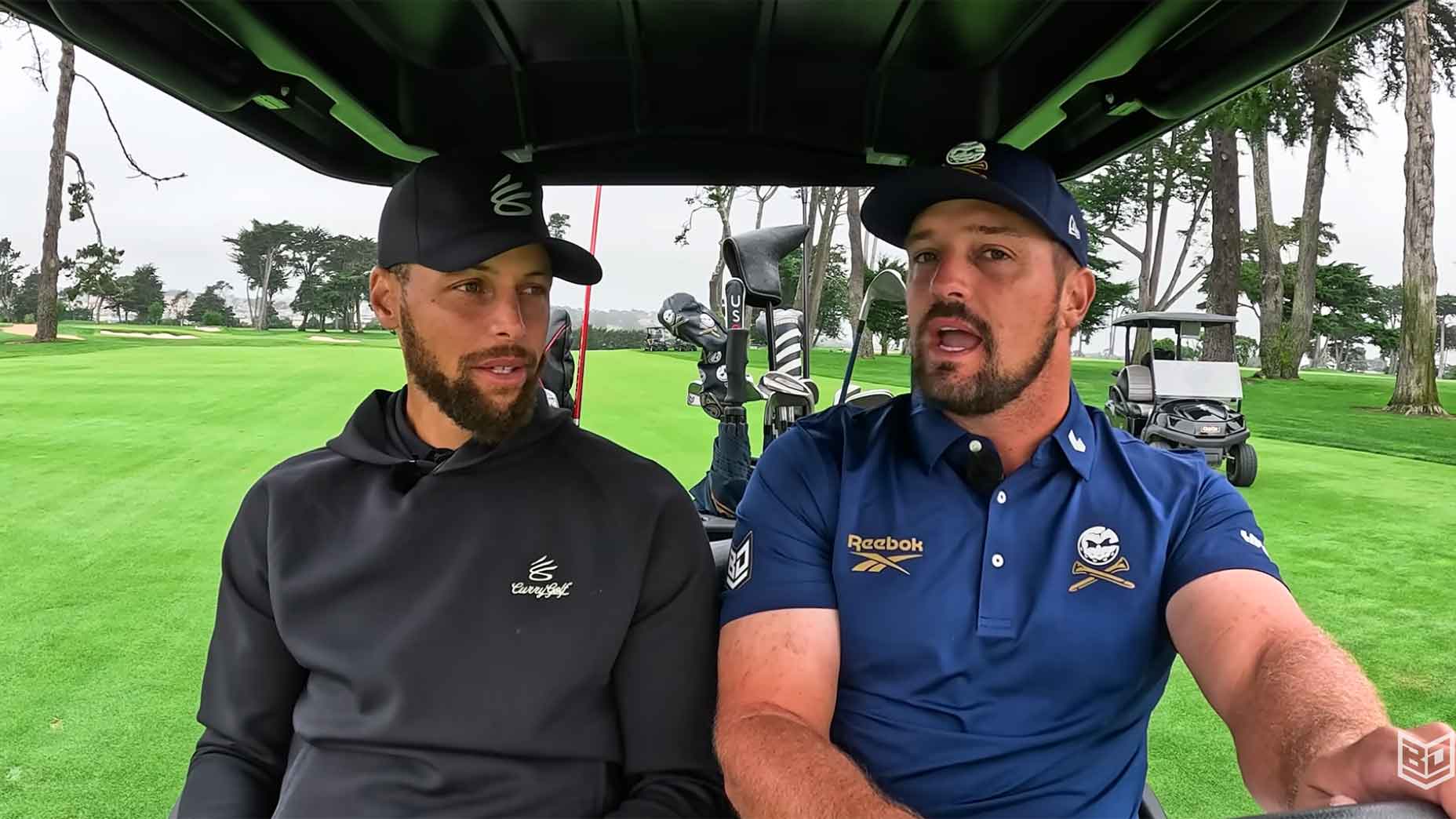Before they were even born, Amelia and Makenzie Kahn were little miracles. Their parents, David and Karen, met cute in an architecture class at Auburn. They married in 2004 and a couple of years later decided to start a family, thrilled at the prospect of giving their parents a first grandchild. After two years of trying it hadn’t happened, so the Kahns turned to artificial insemination. “Trigger shots, meds, invasive doctor’s visits, a tiny cup…let’s just say it’s not the romantic experience you dream up when you consider getting pregnant,” says David, who is 38.
The first attempt failed. So did the second. The effects were more than emotional: each try required months of planning and sent Karen’s hormones on a wild ride. The third procedure failed. So did the fourth. In the meantime, David’s sister Jennifer met a man, married him and gave birth to a son. It was never a race, but David and Karen couldn’t help but feel life was passing them by.
In December 2008, the Kahns decided to try in vitro fertilization, writing a check for $30,000 that would bring them three attempts. A week later, at the nadir of the recession, Karen lost her job doing design services for a custom-home builder. A month after that David was downsized from the Fazio Group, where he had been cutting his teeth as a golf course designer. It was the only job he had ever wanted and it was devastating to have the dream deferred. He sent out resumes and worked the phones while Karen did the daily shots and other medications that are part of the complicated in vitro preparation.
The first implantation of the embryos failed.
They made plans for the next procedure, but as the date approached there was as much dread as hope. How much heartbreak can one couple take? But the second implantation was a success, and the news swept through the Kahns’ community of friends and family in Scottsdale, Ariz., and well beyond. The relief was as profound as the jubilation. Seven weeks into the pregnancy, Karen went for a routine checkup, but this time the doctor couldn’t locate the baby’s heartbeat. Panic quickly turned to despair: she had suffered a miscarriage. Karen had to endure a procedure to remove from her body what was left of their baby.
The Kahns were engulfed by a fog of grief and confusion. It took a while, but eventually they were ready to try for the third and final time. After the retrieval of the eggs, and their fertilization, the doctor called to say that only two embryos had survived the procedure, far fewer than had been hoped for. At the transfer surgery, “The mood was strange,” David recalls. “Very somber, very quiet — it was almost like a funeral home. They just didn’t want to get our hopes up.”
Seven weeks later they heard the most wonderful sound: a strong heartbeat. Still, they wouldn’t allow themselves to celebrate. It was far too early for that. A week later, David and Karen went back for a checkup and were thunderstruck to hear a second heartbeat, as strong as the first. Fraternal twins. Throughout the pregnancy the doctors referred to them as Baby A and Baby B. After all she had been through, Karen got the easy pregnancy and smooth delivery she deserved. The twins arrived on March 16, 2010, in perfect health. Baby A became Amelia, born 10 minutes ahead of Makenzie, whose name is an homage to the good doctor, Alister MacKenzie, the designer of Cypress Point and Augusta National. “When you’re a young married couple you just kind of take for granted that you’ll have kids when you feel it’s the right time,” says Karen, 39. “Everyone around you is getting pregnant, so what’s the big deal? Well, the process is so delicate. Every life is so incredibly precious. You have no idea what you might be embarking upon.”
* * * * *
A mother always knows. Makenzie was an easy baby, carefree and happy. Amelia was a challenge. Instead of melting into her mom’s arms she would arch her back to resist. She fought getting dressed with a strength and ferocity that shocked her parents. When she was upset, Amelia would pound the ground with her fists, and sometimes her head. “Everyone said she would grow out of it,” Karen says, “but by the time she was 15 months I knew there had to be more to it. I had these instincts but everyone else was very dismissive, telling me I was wrong. I felt like I was going insane.” It took nearly a year to persuade Amelia’s doctors to agree to further testing. Around her second birthday she was diagnosed on the autism spectrum. “Mostly we felt relief,” says Karen. “We finally had some answers, and now we could tackle it. We had a plan, we had tools, and we had a community that offered support.”
Using the Applied Behavior Analysis method, Amelia had a series of breakthroughs in her ability to communicate, which unlocked the sweet, cuddly side of her personality. For the next year and a half, both girls thrived while enrolled at the same preschool, with Amelia using an adapted curriculum and Makenzie as “a typical,” in the prevailing parlance.

Their father was doing pretty well, too. In 2009, David had hung up his shingle along with another one-time Fazio associate, Tim Jackson. They worked hard to create their own style, crafting visually stunning designs that offer strategic challenges and fun in equal measure. Among their successes are the wholesale renovation of Monterey Peninsula Country Club’s Dunes Course (now ranked 94th in GOLF’s Top 100) and the original design of Bob Parsons’s new 18-hole course at Scottsdale National and its accompanying Bad Little Nine, a collection of wild par-3s. Kahn brings his architectural know-how to the projects, but it is his artistic sensibilities that shape the ground; he’s always been an introvert and a daydreamer, with a million golf holes living in his head. Says Jackson, “It’s not enough to say Dave has a great passion for designing golf courses — it’s who he is. He never turns it off. If he’s awake, he is thinking about golf course design, about doing things differently, about how to bring to life something that’s never been done before.”
A dream job, a big house in Scottsdale’s Grayhawk development, two happy daughters… it was the life the Kahns had always wanted. But when the girls were in kindergarten, Karen became concerned about Amelia’s eyesight, as she had begun having trouble recognizing colors. Then she began failing to make eye contact with her parents. Within a year Amelia’s vision was diagnosed at 20/400. “Having an autistic, legally blind child, we were just broken over it,” Karen says. “How would she function in the world, you know? But you steady yourself and it becomes, Okay, we can handle this. It’s another challenge, but we got this.”
But Amelia’s deteriorating vision was a signal of deeper distress, like a flare rising above a dark ocean. The optometrist had ordered an electroretinography (ERG) test, and the results were troubling enough that the Kahns sought out a geneticist. Taking in all of Amelia’s symptoms, the doctor ordered further testing, focused on a narrow range of potential disorders. It was a long wait to get the results back, and David and Karen were plunged once again into the awful, familiar unknowing. “I’m on the Internet researching the five things they’re testing for,” Karen says, “and I am just freaking out for a good six weeks, because I’m like, ‘I don’t like any of these.'”
On Feb. 10, 2017, a month shy of the girls’ seventh birthday, their parents were summoned to the geneticist’s office. “We both knew that was bad news,” David says. “If it’s good news they’d just tell you over the phone. The drive there was very quiet. I don’t think we said a word to each other.” The doctor delivered a crushing verdict: juvenile Batten disease, an exceedingly rare neurological disorder for which there is no cure. “You see it in movies and on TV, where someone gets a bad diagnosis in the doctor’s office,” David says. “Your ears turn off and you glaze over, and you don’t hear any words that come out of their mouth afterwards. It’s pretty true.” The shock was compounded by bafflement: “How could they have something that you’ve never heard of?” David asks.

Batten is the cruelest disease imaginable. Vision loss is typically the first symptom, and powerful seizures follow, usually within a year or two. The Kahns liken Batten to a cross between Parkinson’s and Alzheimer’s, because eventually Amelia will be robbed of her motor skills, memory and ability to speak. Chewing food becomes impossible, necessitating feeding tubes. Internal organs inexorably shut down. Life expectancy is in the late-teens to early 20s.
After returning home from the geneticist’s office, David laid face-down under a tree in the backyard and didn’t move for four or five hours. Karen scooped up Amelia and squeezed her so hard she nearly broke her. Her bawling was so violent the girls became frightened.
In the days that followed, the Kahns felt lost in a fog, but armed with a greater understanding of Amelia’s condition they began to consider Makenzie’s behaviors in a new context. One day she was reading a favorite book, which had colored letters set against a similarly-hued background, and Makenzie complained, for the first time, that she couldn’t see the words.
“That’s when we knew,” says David, “that she had it, too.”
* * * * *
On a recent Thursday afternoon, the Kahns walked out their front door to make the short stroll to the girls’ school. Their neighborhood is a perfectly manicured vision of the American dream. (PGA Tour winner James Hahn lives around the corner.) One of the symptoms of Batten is social anxiety, so the girls, now 8, are excused from school a few minutes early to allow them to avoid the crush. David and Karen loitered in the lobby, then their daughters burst into the hallway, full of life. If Karen ever worried about spending too much money on their clothing, those days are long gone; the girls were utterly adorable in matching outfits.
The front door to the school is automated, and Makenzie waited patiently, saying, “Sister, do you want to push the button?”

Amelia is a couple of inches taller than her twin, with golden hair and blue eyes. Her speech can be a little difficult to understand, but her expressive face often tells the story. She tap-taps with a cane when walking, but it doesn’t exactly slow her down — Amelia tore down the path for home, leaving her family in the dust. Makenzie has dark hair with Shirley Temple curls and a cute, squeaky voice. She remains the family goofball. Her speech and eyesight are better than her sister’s, and she is more socially aware; despite some balance issue she usually resists using her cane, or folds it up and puts it in her backpack when in view of the school.
Upon returning home, a backyard soccer game broke out. Both girls were clearly born with athletic tools. Over the past couple of years their parents nurtured them in swimming, soccer and gymnastics, but given their mounting physical limitations games are now confined to the backyard. Eventually Amelia came inside to make a smoothie with her dad — she loves the cacophony of the blender — while Makenzie and Karen became engrossed in a board game. This tableau could not have been more normal. But while David and Karen are both fun, enthusiastic parents, there is an unmistakable heaviness to their smiles, and a weariness in their gaze. “The fog never lifts,” David said later, in a quiet moment. “The good times are almost worse, because we know how fleeting they are. You can’t help but think, Right now, this moment, this is the best it’s ever going to be. The girls don’t know their future is so bleak. They don’t know the car crash is coming, that they’re going to have to suffer for so long. But for Karen and I, the happiest moments are very bittersweet because we know they can’t last.”
Since both of their parents were carriers of the recessive Batten gene, each girl had a one-in-four chance of contracting the disease. But their symptoms will play out independent of one another, and the earlier onset and more rapid pace of Amelia’s degeneration has given rise to what Karen says is her deepest fear, which she expresses in a voice thick with emotion: “What if Makenzie still has the cognitive understanding and is watching her sister lose everything? What if she’s watching that and knows that is going to happen to her, too?”
In the face of such haunting uncertainty, how do you keep going? In the first month after the diagnosis, David and Karen’s impulse was to spoil the girls rotten: spending sprees at the American Girl doll store, ice cream almost every night — pretty much whatever they wanted. But that didn’t last, because the family still needed structure. So the girls continued their schooling — “Homework might not be as important as it used to be,” allows Karen — and David slowly returned to work, though he would often find himself staring at a sketch and realize, with a start, that an hour had vanished into thoughts about his girls. As they settled into their new normal, David and Karen were surprised to discover that family life has grown more harmonious.
“Through the years we have really struggled with Amelia’s behaviors, and right around the time of the diagnosis they had grown worse,” says Karen. “I hate to use this word, but the refreshing thing about Batten is we’ve really changed the way we deal with Amelia. Because before we were trying to make her fit into society. We were saying, ‘You can’t get away with that behavior when you’re older, it’s going to be unacceptable.’ And we’ve realized that she really can’t control her behaviors. It’s nothing we can fix. And the less we fight it, the happier she’s been. We’re just finally accepting her for who she is. Crazy to say, but since the diagnosis she’s been the happiest she’s ever been.”

The Kahns are racing against the future by maximizing the present. The first project David became engrossed in after the diagnosis was building a whimsical course on a vast private ranch in Texas. He loved the freedom of the design but says the real reason he took the job was because the ranch is stocked with exotic game; Makenzie is infatuated with zebras, and the whole family has already been to Texas to visit them and is planning another trip soon. She also loves penguins, and the Kahns are now on a quest to help Makenzie see all 18 species in person. So they recently traveled to a zoo in Camden, N.J., to meet a little blue fairy penguin, and to SeaWorld in San Diego to spend time with a Macaroni. The family is seriously considering jetting to New Zealand to cross the yellow-eyed penguin off the list.
“We’re trying to pack in as many bucket-list items as we can while the girls still have the sight and awareness to enjoy it,” David says.
Amelia has a similar ardor for monkeys, and Jane Goodall has long been her hero. After some correspondence, Goodall sent her a signed book as part of a care package of presents, and every day since, Amelia has raced to the mailbox, hoping for more. (Karen is considering sending fake packages, because why not?) When the Kahns heard that Goodall would be at the Hollywood Bowl in October 2017 for the premiere of the documentary Jane, they arranged for Amelia to spend twenty minutes with her in a private dressing room. With her exquisite understanding of all living things, Goodall dimmed the lights and sat close to Amelia and they chatted quietly. They bonded intensely, and David still gets choked up thinking about that night and what it meant to his daughter.
All of these trips required help with the setup and execution, and the Kahns have been blown away by the kindness and empathy of strangers. “There is still so much good in the world,” Karen says. “We’ve seen it through the girls.”
They have also developed important new connections at home. Makenzie’s is with a shaggy old horse named Harriet that she began riding six months ago. Sitting in the saddle, she is tall and proud, and her instructor, Saebra Pipoly, of the nonprofit Horses Help, has already seen changes in her pupil: “When we first got to know her she would speak in a very, very tiny, quiet voice. And she’ll actually now hold a conversation with us, and she will talk louder to her horse than she will to me or the volunteers. It’s neat to see that she’s become confident enough to talk on her own and make decisions on her own.”

Amelia has been transformed through karate. The other day at the dojo was a big one: she was testing for her purple belt, which meant more to Amelia than any other because it’s her favorite color. The weekly sessions have helped her build strength and improve her balance while imbuing her with a new sense of self. For a full hour Amelia labored through an intense series of drills, highlighted by the shattering of a piece of plywood with her fist. Her parents and sister cheered wildly when she was awarded the prized belt. Her beaming sensei, David Bravo, hailed Amelia for her “quiet strength.” He added, “She loves the work. No matter what I ask her to do, she does it. Doesn’t matter how hard it is. She never argues. She never gets frustrated. She never says she doesn’t wanna do it. So just having a student that’s always excited to be here and ready for the next challenge is what makes her special, I think.”
Seated in the corner of the dojo was Stan Kahn, a prominent member at Whisper Rock Golf Club. He ordinarily radiates manliness but on this day couldn’t stop wiping away tears. Witnessing his granddaughter earn the purple belt was “one of the highlights of my life,” Stan said. He added, “That girl is such a fighter. So is Makenzie. They inspire us every day. So do Dave and Karen. It’s heart-wrenching what the family is going through, but we’re all amazed at the way they have embraced life. The dedication Dave and Karen have for the girls and the sacrifices they’re making for them, well, it’s just an awesome testament to the power of love.”
* * * * *
How rare is Batten disease?
“I know there is a kid in Sweden who has it,” says Karen. “I know of one kid in this state and two kids in that state. That’s how small the numbers are.”
With such a tiny potential market, drug companies have little incentive to put resources into studying the disease and trying to develop a cure, or even ways to slow its symptoms. And so the Kahns are taking on this fight themselves, having formed the ForeBatten Foundation. “That golfy play on words with ‘fore’ might be a little corny,” says David, “but it speaks to our mission: Watch out, Batten.”
This Monday, March 12, the ForeBatten Foundation will host its inaugural fundraiser at TopGolf in Scottsdale. The ambitious goal is to raise the $800,000 needed to fund a critical new research study. David has tapped his many friends and contacts in golf to assemble a dazzling array of auction items, including a pair of Berckmans Place tickets for the final round of this year’s Masters; a dream trip for four to Bandon Dunes; tee times everywhere from Winged Foot to Riviera to Oakmont to Los Angeles Country Club; unique experiences, ranging from a private tennis lesson with Andy Roddick to a round of golf with Paige Spiranac; and a once-in-a-lifetime chance to play the Annenberg Retreat at Sunnylands, the cultish, intensely private Dick Wilson design (restored in 2011 by Jackson Kahn) that has long been a private playground for ambassadors and Presidents. (For information about attending the event or to bid on items, click here.) The golf community in Scottsdale and far beyond has rallied around the Kahn family, and numerous PGA Tour pros are expected to attend the fundraiser, along with current and former athletes from other sports who love golf. David calls the support “nothing short of spectacular. The golf community is a strong, close-knit group of people who truly do care for each other.”

Every dollar and every minute counts, because Amelia and Makenzie are racing the clock, needing a breakthrough before they are engulfed by the disease. A glimmer of hope comes by way of a recently approved drug for late infantile Batten (also known as CLN2) that has slowed the onset of symptoms for some of the kids in the trial. Juvenile Batten (CLN3), from which the Kahn girls suffer, is triggered by a different protein so they cannot benefit from this particular drug.
It is agonizing for David and Karen to leave the fate of the girls in the hands of others — doctors and scientists and donors. But the foundation has brought meaning to their heartbreak. Says Karen, “It gives us some sense of relief that at the end of the day we did everything we could. We can’t just accept this. Even if we can’t save them, we’re going to fight for our girls. And we’re going to fight for every other kid who has been diagnosed. This foundation could wind up being our whole purpose.”
And so they wait and watch, hypersensitive to every little change in the girls. Amelia has already lost many words she used routinely in the past; Makenzie’s memory is beginning to flicker, too. Facing this, David’s thoughts sometimes go to dark places, to the seizures that are coming and the days when his daughters will need to be hooked up to feeding tubes. Karen tries to keep at bay the haunting metaphysical questions. “Our grief counselor said to us one time, ‘I can’t believe you’ve never come in here asking, Why us?'” Karen says. “I won’t go there. It’s too hard. I have let myself wonder if maybe we weren’t meant to have kids. Maybe someone was trying to tell us that by making it so hard to conceive. Maybe we should not have messed with nature.”
But even as their bodies betray them, Amelia and Makenzie are like every other kid in that they are sustained by the love of the their parents. Those feelings always flow at bedtime. Makenzie is funny and silly, playing with her many penguin stuffed animals. Amelia is more pensive. Every night she insists on being cradled and that her parents sing her a favorite lullaby. It’s often the most poignant moment of the day for David and Karen, taking them back to when the girls were babies, long before they knew what was to come. This family deserves an endless number of sweet goodnights. To get there, David says, “We need a little bit of a miracle.” But they already have two of them.





